
Telepathy is the purported vicarious transmission of information from one person's mind to another's without using any known human sensory channels or physical interaction. The term was first coined in 1882 by the classical scholar Frederic W. H. Myers, a founder of the Society for Psychical Research (SPR), and has remained more popular than the earlier expression thought-transference.
Cold reading is a set of techniques used by mentalists, psychics, fortune-tellers, and mediums. Without prior knowledge, a practiced cold-reader can quickly obtain a great deal of information by analyzing the person's body language, age, clothing or fashion, hairstyle, gender, sexual orientation, religion, ethnicity, level of education, manner of speech, place of origin, etc. during a line of questioning. Cold readings commonly employ high-probability guesses, quickly picking up on signals as to whether their guesses are in the right direction or not, then emphasizing and reinforcing chance connections and quickly moving on from missed guesses. Psychologists believe that this appears to work because of the Forer effect and due to confirmation biases within people.

Derren Brown is an English entertainer, mentalist, illusionist, and writer. Brown began performing in 1992, making his television debut with Mind Control (2000). He has since starred in several more shows for stage and television, including Something Wicked This Way Comes (2006) and Svengali (2012) which won him two Laurence Olivier Awards for Best Entertainment, as well as The Experiments (2011) which won him a BAFTA for Best Entertainment Programme at the 2012 awards. Brown made his Broadway debut with his 2019 stage show Secret. He has also written books for both magicians and the general public.
The Amazing Kreskin, also known as Kreskin, is an American mentalist who became popular on television in the 1970s. He was inspired to become a mentalist by Lee Falk's comic strip Mandrake the Magician, which features a crime-fighting stage magician. He has always presented himself as an "entertainer," never as a psychic, who operates on the basis of suggestion, not the paranormal or supernatural.
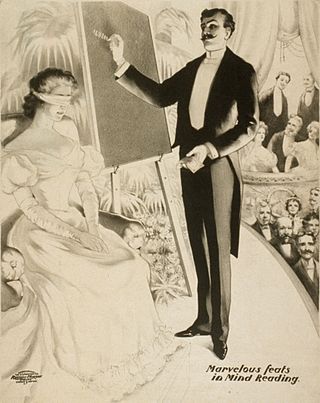
Mentalism is a performing art in which its practitioners, known as mentalists, appear to demonstrate highly developed mental or intuitive abilities. Performances may appear to include hypnosis, telepathy, clairvoyance, divination, precognition, psychokinesis, mediumship, mind control, memory feats, deduction, and rapid mathematics. Mentalists perform a theatrical act that includes special effects that may appear to employ psychic or supernatural forces but that are actually achieved by "ordinary conjuring means", natural human abilities, and an in-depth understanding of key principles from human psychology or other behavioral sciences.

Billet reading, or the envelope trick, is a mentalist effect in which a performer pretends to use clairvoyance to read messages on folded papers or inside sealed envelopes. It is a widely performed "standard" of the mentalist craft since the middle of the 19th century. Billet is the French term for note or letter, referring to the rectangular shape of the paper.

Table-turning is a type of séance in which participants sit around a table, place their hands on it, and wait for rotations. The table was purportedly made to serve as a means of communicating with the spirits; the alphabet would be slowly spoken aloud and the table would tilt at the appropriate letter, thus spelling out words and sentences. The process is similar to that of a Ouija board. Scientists and skeptics consider table-turning to be the result of the ideomotor effect, or of conscious trickery.

Mediumship is the practice of purportedly mediating communication between familiar spirits or spirits of the dead and living human beings. Practitioners are known as "mediums" or "spirit mediums". There are different types of mediumship or spirit channelling, including séance tables, trance, and ouija.
This is a glossary of conjuring terms used by magicians.
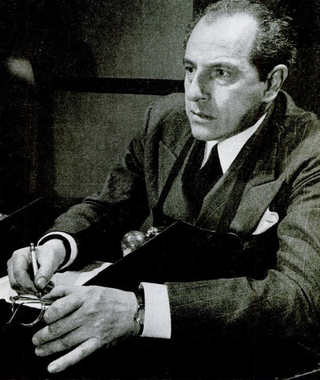
Joseph Dunninger, known as "The Amazing Dunninger", was one of the most famous and proficient mentalists of all time. He was one of the pioneer performers of magic on radio and television. A debunker of fraudulent mediums, Dunninger claimed to replicate through trickery all spiritualist phenomena.
Axel Hellstrom was a German muscle reader, mentalist and stage magician. He redefined the art of muscle reading to such an extent that this technique, also known as "contact mind reading" and "Cumberlandism", is now best known by the name "Hellstromism".

Magic, which encompasses the subgenres of illusion, stage magic, and close-up magic, among others, is a performing art in which audiences are entertained by tricks, effects, or illusions of seemingly impossible feats, using natural means. It is to be distinguished from paranormal magic which are effects claimed to be created through supernatural means. It is one of the oldest performing arts in the world.
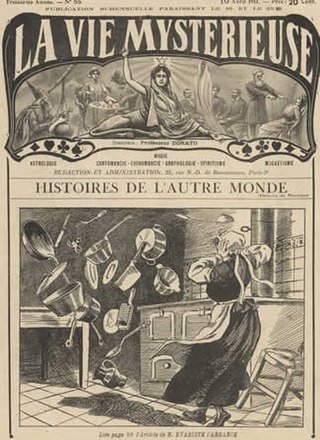
Telekinesis is a hypothetical psychic ability allowing an individual to influence a physical system without physical interaction. Experiments to prove the existence of telekinesis have historically been criticized for lack of proper controls and repeatability. There is no reliable evidence that telekinesis is a real phenomenon, and the topic is generally regarded as pseudoscience.

Washington Irving Bishop, also known as Wellington was an American stage mentalist. He started his career as an assistant under the muscle reader J. Randall Brown, but was most well known for his performance of the blindfold drive.
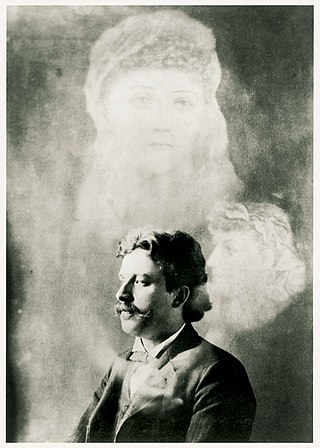
John Randall Brown was an American mentalist of the Victorian era, and was one of the first nationally popular mentalists of his age. By some accounts, Brown was the first to publicly perform a mind-reading act in the United States, in 1873. He was born in Saint Louis, Missouri.

Guy Bavli is an Israeli mentalist, illusionist, actor and lecturer. He is known for being the first Israeli citizen to win an international magic competition in the United States. He owns the entertainment company "Master of the Mind", based in Fort Lauderdale, Florida.

The ideomotor phenomenon is a psychological phenomenon wherein a subject makes motions unconsciously. Also called ideomotor response and abbreviated to IMR, it is a concept in hypnosis and psychological research. It is derived from the terms "ideo" and "motor". The phrase is most commonly used in reference to the process whereby a thought or mental image brings about a seemingly "reflexive" or automatic muscular reaction, often of minuscule degree, and potentially outside of the awareness of the subject. As in responses to pain, the body sometimes reacts reflexively with an ideomotor effect to ideas alone without the person consciously deciding to take action. The effects of automatic writing, dowsing, facilitated communication, applied kinesiology, and ouija boards have been attributed to the phenomenon.
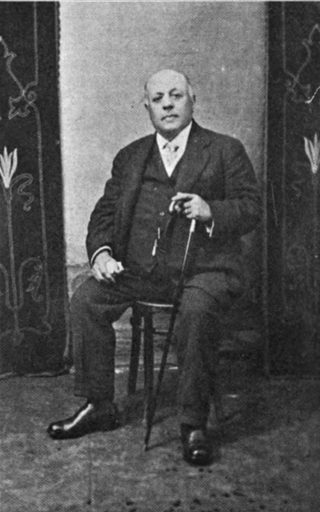
Bert Reese (1851–1926) was an American-Polish medium and mentalist, most well known for his billet reading demonstrations.
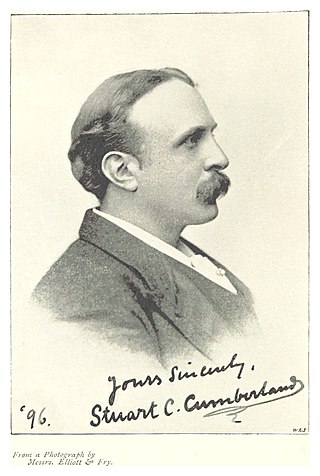
Stuart Cumberland (1857–1922) was an English mentalist known for his demonstrations of "thought reading".
Radiesthesia describes a physical ability to detect radiation emitted by a person, animal, object or geographical feature. One of its practitioners, J. Cecil Maby, defined it as "The faculty and study of certain reflexive physical responses of living tissue to various radiations ... resulting in displacement currents and other inductive effects in living tissues." He distinguished it critically from the psychic facility of divination. Despite this distinction, there is no scientific evidence for the existence of the phenomenon and it is classed by the mainstream as pseudoscience.















